Table of contents
General meaning of Mabon
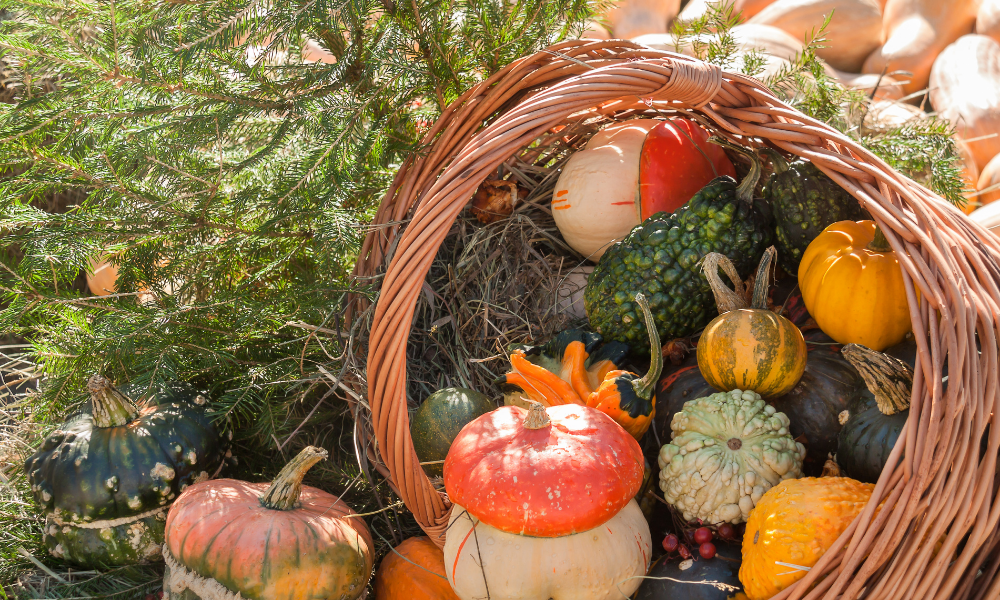
Mabon is a pagan festival celebrating the autumn equinox, celebrated approximately on September 21 in the Northern Hemisphere and March 21 in the Southern Hemisphere.
Considered a minor Sabbat, Mabon is the second and penultimate harvest festival of the Wheel of the Year, the pagan calendar, and marks the arrival at a point of balance, where day and night have equal length.
From then on, darkness begins to defeat daylight, resulting in colder and shorter days. In this article, we will present the main meanings, customs, and ritual practices of this autumn festival.
In addition to presenting its mythology, we will give tips on how to celebrate it, as well as spells and rituals to be practiced this Thanksgiving season. Read on to understand about the magic present on this powerful date and align yourself with its energy.
Lughnasadh, Lammas or Festival of the First Harvest
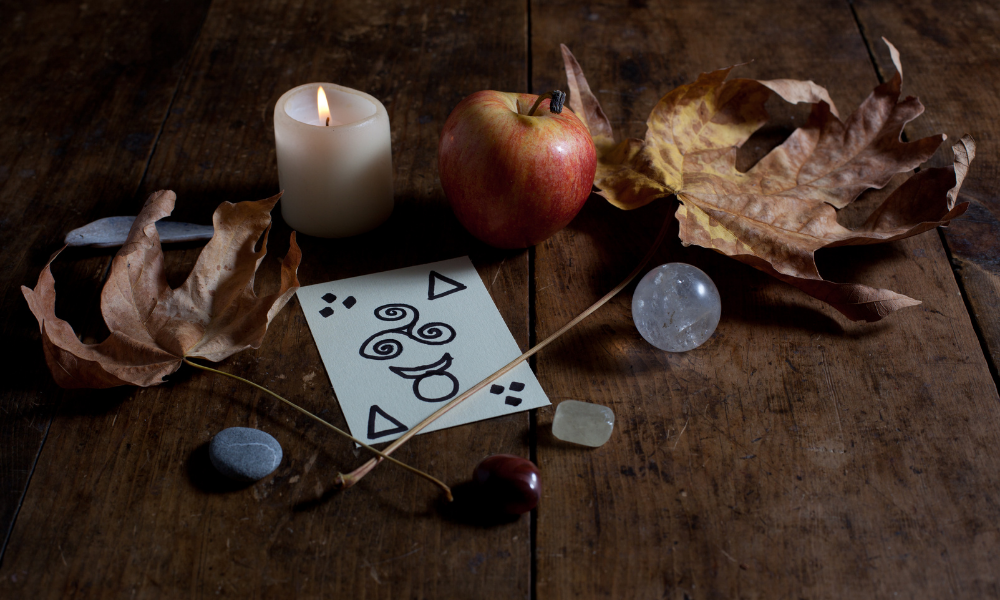
Following the Wheel of the Year, Lughnasah is the first festival of the harvest. Celebrating the abundance resulting from the harvest, the wheel turns and reaches Mabon, a time when the second and penultimate great harvest takes place. Below, we introduce the concept of the Wheel of the Year and introduce the customs of Mabon. Check it out.
The Wheel of the Year for the pagans
The Wheel of the Year is a kind of calendar consisting of 8 seasonal festivals that mark the sun's walk during the year. In Wicca, a neo-pagan religion based on the revival of Witchcraft according to Gerald Gardner, these festivals are called Sabbats.
Sabbath celebrations are related to the cycles of nature given from the relationship between the feminine principle, the Goddess, and the masculine principle, the God, whose sacred union generates all things and allows the cycles of the seasons to be perceived.
Sabbats are divided into two groups: Major Sabbats, which have fixed dates and are inspired by the great Celtic festivals, and Minor Sabbats, which have no fixed dates and occur at the astronomical beginnings of the seasons, called solstices and equinoxes.
Mabon, the Autumn Equinox
Mabon is the Second Harvest Thanksgiving Festival, which coincides with the Autumn Equinox. This festival is named after the god of the same name in Welsh mythology, considered the child of light and son of the Earth Mother Goddess.
There is little evidence that this festival was practiced by the Celts, as the word Mabon was included around the 1970s and is part of pagan Reconstructionism. According to Wicca myths, Mabon is the period when the male principle of deity, the God represented by the Sun, is withering away.
It is a moment of balance, where the Goddess is seen as the Queen of the Harvest and the God dies with the reaping of the harvest.
Customs and Traditions
On Mabon, it is customary to gather wild fruits to fill a cornucopia, a symbol of abundance associated with this Sabbat. In addition, it is important to reflect on what was conceived and planted on Imbolc and Ostara, respectively, and what its relationship is to the harvest.
Mabon is a time to give thanks for things that have been harvested and to observe visible changes in the surrounding nature. Therefore, it is common to go out for walks in parks or woods, as well as to look for areas or projects that need to be completed.
The cornucopia as a symbol of festivity
The cornucopia is a traditional symbol of the autumn equinox festival. Hailing from Greco-Roman mythology, its name means "horn of plenty" in Latin and represents attributes such as fertility, wealth and abundance.
In ancient times, it was represented by a horn-shaped vase filled with many fruits and flowers spreading from it. Moreover, the cornucopia is a symbol of balance, since it contains a phallic shape, representing the masculine energy and a cavity that symbolizes the feminine.
Vine and Blackberry
In European countries, autumn is a time of harvesting fruits such as grapes and blackberries, so both the vine and the mulberry are symbols of this Sabbat. The vine is a plant that contains in itself another Sabbat symbolism, balance, since it has masculine and feminine energies at the same time.
In the Ogham, a medieval alphabet used to write the Irish language, both the vine and the mulberry tree are represented by the letter Muin. In addition, both represent the repeating cycles.
Angus, the God of love honored at the Equinox
Angus, god of love, summer, youth and poetic inspiration, is one of the deities associated with the Equinox. According to Irish mythology, Angus is a member of a supernatural race called the Tuatha Dé Danann.
In the Scottish version of his myth, Angus possesses a golden harp with silver strings which, when played, causes young men to follow the music through the woods.
Celtic Reiki
In Celtic Reiki, a form of Reiki that incorporates the wisdoms contained in British plants and trees, the Mabon period can be used to achieve energetic balance. Like any Reiki technique, hands are used to transmit, but the distinctive feature of this technique is the use of the Ogham, the Celtic-Irish alphabet.
The Muin energy in Celtic Reiki
In Mabon, the energy worked in Celtic Reiki is present in the Ogham Muin, the eleventh letter of this alphabet. Considered one of the most mysterious letters of the alphabet, it represents the vine or thorny bushes like the mulberry tree.
The meaning of this letter is uncertain, but on this Sabbat, it is used to represent the harvest and the balancing of energies.
Sabbat Mabon in Wicca, customs and traditions
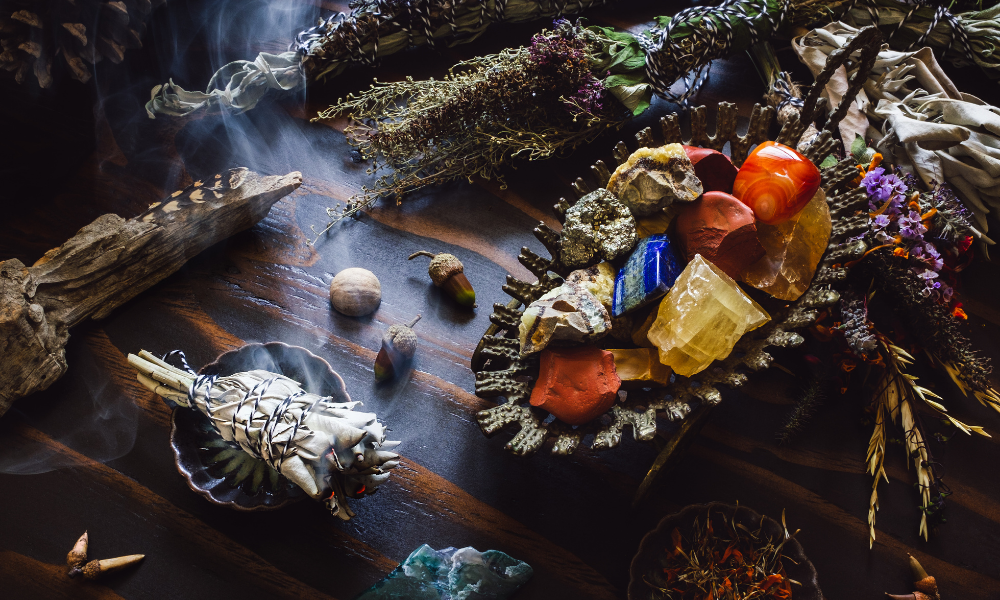
In Wicca, the Sabbat Mabon assumes a special meaning, since it is part of the 8 solar festivals that integrate the practice of this religion. In this section, we will present the Wiccan concepts about the autumn equinox, as well as its foods and rituals. Check it out.
The Concept of Sabbat Mabon in Wicca
In Wicca, Mabon is tied to the concept of thanksgiving. It is a time to rest after the work of the second harvest and to give thanks for all the gifts harvested throughout the year.
Because it heralds winter, Mabon is a time to prepare for darker days. It is a time to enjoy the fruits of your labor throughout the year and renew the hopes you had during Ostara and Imbolc.
The God is suffering, but, He has left within the Goddess His seed. Soon, she will give birth to the sun again.
Rituals and meanings
Being an autumn celebration, Mabon rituals are related to the colors orange, red, yellow, brown and green. A Mabon altar is usually erected, including flowers and fruits typical of the season and its symbols such as the cornucopia, symbolizing the harvest invoice.
Depending on your spirituality, there are several ways to practice your rituals, from lighting a candle in thanksgiving and taking a walk to notice the changing seasons, to more complex rituals practiced in a specific ritual space like a circle.
The important thing is to connect with the balancing energy of this period and enjoy the abundance typical of this season.
How to do the Mabon ritual
To celebrate a simple Mabon ritual, leave an apple in the center of your altar. On it, to the South, leave a red, orange or yellow candle. In the West, a chalice with wine or juice. In the North, leaves collected by you or a crystal.
Finally, leave clove or frankincense in the East. Sit facing the altar, light the candle and the incense. Give thanks for all the things you have harvested during the year and meditate on the fruits of your labor. Then write on a piece of paper what you want to get out of your life. Burn it in the flame of the candle.
Drink some of the contents of the chalice, eat half of the apple and let the candle and incense burn all the way down. Finally, pour the drink and half of the apple into nature as a libation to the gods.
Recommended foods or preparations
The sacred foods of Mabon are seasonal fruits, such as grapes, blackberries and apples, known for their powers related to life, immortality, healing and regeneration.
In addition dishes such as apple crumble, mashed sweet potatoes, roasted pumpkin seeds, blackberry jam, apple pie and roasted corn are typical of this festival. To drink, bet on herbal teas, juices such as apple and grape and, if you can consume, red wines.
Traditional Mabon spells in Wicca
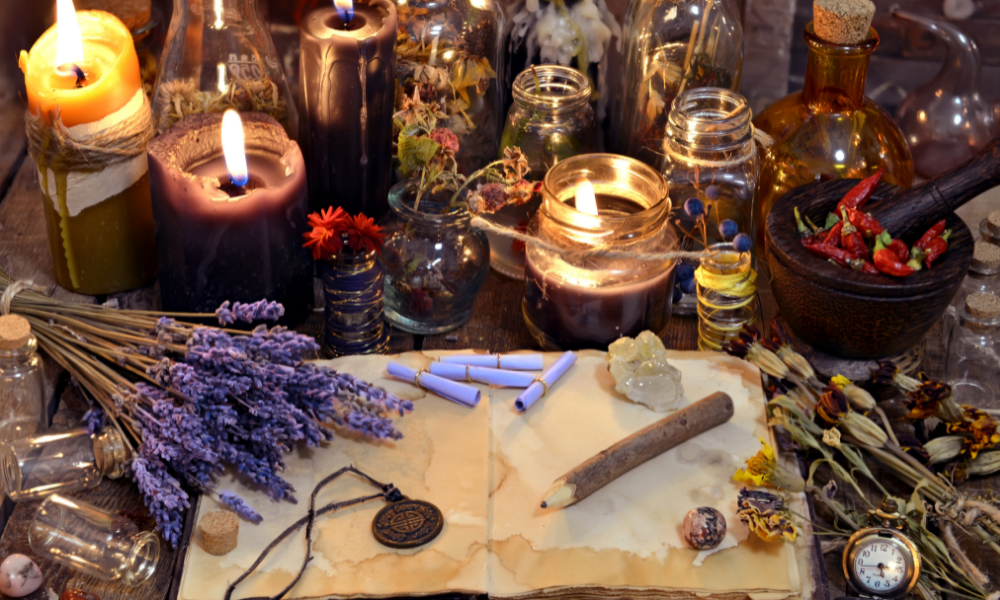
Mabon is a time when you can practice spells to take advantage of the festival's egregor. Below you will have access to easy to do personal spells suitable for this time.Check them out.
Spell for self protection
This spell for self protection should be practiced whenever you want to feel more secure and want to keep physical and spiritual dangers out of your life. To do this, take a glass jar with an amber-colored lid (it can be a bottle) and fill it halfway with salt.
Then add inside a paper with your name, date of birth and symbol of your astrological sign, two cinnamon sticks, a handful of dried rosemary and 13 cloves. Fill the glass with salt and cover it, leaving it in a place where no one can see or touch it.
Spell to attract domestic help
If you are experiencing problems at home, do this spell to attract help. Draw, on a piece of paper, the letter of the ogham alphabet called Muin, which is associated with this Sabbat, using a pencil or black ink pen.
Leave this paper in a deep glass, wooden or porcelain dish, then cover the paper by filling your dish with cereal grains or pumpkin seeds.
Leave the dish in the highest part of your home (on top of a bookcase, shelf, etc.), keeping it away from prying eyes until help arrives. When you get help, throw the seeds or grains into the wild.
Spell for harmony at home
For harmony at home, leave a white candle at the center point of your home. Before lighting it, leave the house with two sticks of incense of lotus, sandalwood, rosemary, cedar, myrrh or frankincense.
Light the incense sticks and walk straight into your house, going clockwise through every corner of it. As you walk through the house, imagine a white light filling your home with positive energy and harmony. When you finish your walk through the house, light the white candle and repeat:
"From winter to summer,
Night and day,
I say my prayers,
And I bring harmony to this home!"
Recite this incantation for 13 times and then let the white candle and incense burn completely.
Thanks to the gods, universe and nature
To thank the gods, the universe and nature, you can do this spell quickly. On a day when you have time, prepare some delicious food. Give preference to something you really like. It doesn't have to be something elaborate, as long as it gives you pleasure. If possible, use some typical seasonal ingredient as a symbol of the harvest.
Make some tea and take a portion of your food, heading to a place where you will not be disturbed. Eat your food slowly and give thanks for all the things that have happened in your life, reserving a piece of it.
Drink some of the tea, leaving a little of it. When you are done, leave the drink and the food separated in nature as a libation to the gods.
Prayer for Mabon
"Holy be thy name, Lady of the Harvest,
Whose fruits of the earth adorn my table.
I am grateful for the food and gifts designed for me,
And I ask you to hold me in your arms,
Yeah, I know the God of Seeds is leaving.
Light my way,
Awaken my balance,
For as light and darkness are equal,
I ask for harmonies for animals and people I live with.
Lord of Mabon,
May your seed develop,
Protected from the cold and dangers of winter,
For, I am your son/your daughter and for your sunshine I wait.
May everyone be safe,
People and animals,
And on earth let goodness be done,
Untie the bonds of all evil,
For, we are rejoicing in the bounties of this second harvest!"
The other seven Pagan celebrations
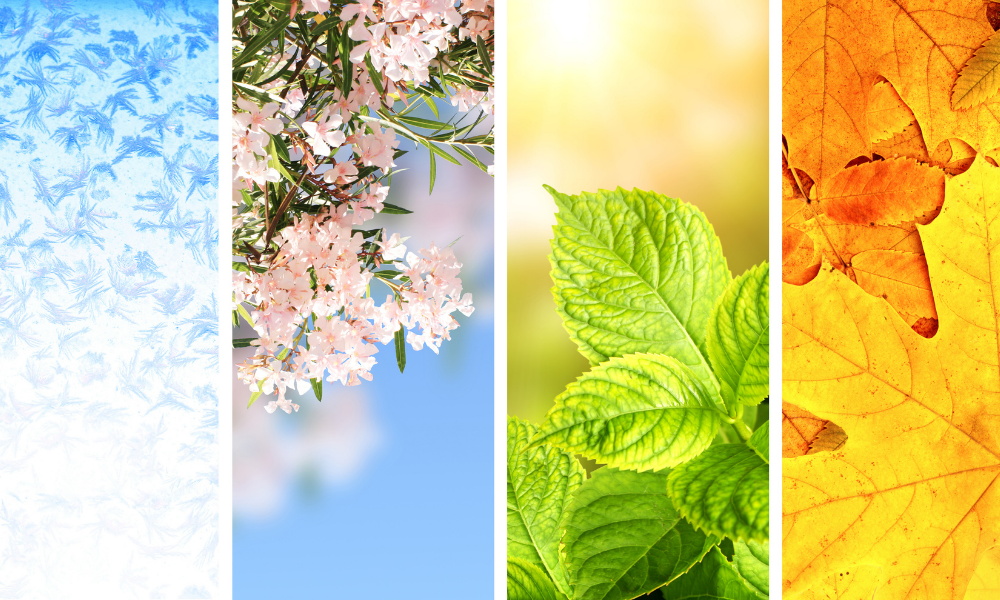
Mabon is one of the 8 festivals of the pagan calendar. In religions like Wicca, Mabon makes up, along with Yule, Ostara, Litha, Samhain, Imbolc, Beltane and Lughnasadh, the Wheel of the Year that is part of the practices of this religion. Below, understand their customs and their relationship to the Goddess and the God.
Samhain
Samhain (pronounced 'sôuin') is one of the great Witches' Sabbats, celebrated on April 30 in the Southern Hemisphere, Samhain coincides with Halloween in the Northern Hemisphere, which occurs on October 31, the day before All Saints' Day.
In this festival, the Cornish God is dead, and because he represents the sun, the days become darker, as the sun rises later and sets earlier and later, in the darkest half of the year.
At Samhain, the veil between the worlds is more tenuous, and so the ancestors are celebrated, as it is believed that the spirits of those who have departed can walk among the living again.
Yule
Yule is the celebration of the Winter Solstice. After suffering on Samhain, the Sun God is reborn again in Yule as the Child of Promise. His birth takes place in Midwinter and brings with it the reminder that brighter and longer days will come and that the light will always return.
As a symbol that light and life will soon return, it is common to decorate the house with pine trees, since they remain green even during the cold winter, garlands and lighting bonfires. In Neopagan traditions, it is also common to give gifts to loved ones on this date.
In the Northern Hemisphere, Yule is celebrated around Christmas, while in the Southern Hemisphere it occurs on approximately June 21.
Imbolc
Imbolc is the name of one of the four great Gaelic seasonal festivals and its name means "within the womb". This festival takes place at the midpoint between the winter solstice and the spring equinox, on July 31 in the Southern Hemisphere and February 2 in the Northern Hemisphere.
He is the Sabbat of new beginnings and is associated with the Celtic goddess of fire, fertility, and poetry, Brigid. In this festival, the Goddess is resting under the earth after the birth of the God and is beginning to give the first signs that life will sprout again.
As part of their traditional celebration, it was common to light fires and make a doll representing the goddess Brigid, using sheaves of wheat and oats.
Ostara
Ostara marks the arrival of spring and is therefore a minor Sabbat. After giving birth to the God at Yule and regaining her strength at Imbolc, the Goddess in her Maiden aspect begins to walk on the earth, chasing away through her steps the cold of winter and awakening with her walk the flowers of spring.
The time has come to plow the earth to sow it and prepare to reap what you wish. In Ostara, night and day are of equal length and it is therefore a day of balance. In the Northern Hemisphere, Ostara occurs approximately on the 21st of March, while in the Southern Hemisphere, September 23rd is the approximate date.
Beltane
Beltane is a Major Sabbat that marks the beginning of summer, when warmer and clearer days finally arrive. During Beltane, there is the meeting of the Goddess with her Consort, the Cornish God, and from this union, the Goddess will beget a son who will bring the promise of light again in winter.
On this Sabbat, fertility rites are performed which usually occur after a magical dance around the Beltane Mast and the coronation of the May Queen. In the Northern Hemisphere, Beltane is celebrated on May 30, while its date in the Southern Hemisphere is October 31.
Litha
Litha is the Lesser Sabbat on which the summer solstice is celebrated. It is preceded by Beltane and followed by Lammas. Litha marks the peak of summer, the time when the sun reaches its highest point, resulting in the longest day of the year.
The Goddess is pregnant with the Sun God and the God is at the height of his manhood. It is a time of fertility, abundance, joy and celebration. However, from the turning of the Wheel of the Year, little by little the whisper of shadows makes itself present, for from Litha, the days will grow shorter.
Traditionally bonfires are lit to represent the Sun on this day. Litha is celebrated around June 21 in the Northern Hemisphere and December 21 in the Southern Hemisphere.
Lammas
Lammas or Lughnasadh is a Major Sabbat. It is the first of the Series of three harvest festivals, along with Mabon and Samhain respectively. In it, the results of the union of the God and Goddess are celebrated, the fruits of which are realized in the abundance of the first harvest.
It is time to harvest what was planted in Ostara and to give thanks for the abundance typical of this time of year. The Goddess is presented as the Matron of Cereals and wheat and other grains are the symbols of this Sabbat.
Traditionally, Lammas bread is baked on this day with the grains of the harvest to attract abundance. Lammas is celebrated on August 1 in the Northern Hemisphere and on February 2 in the Southern Hemisphere.
Why do Wiccas recommend celebrating Sabbat Mabon?
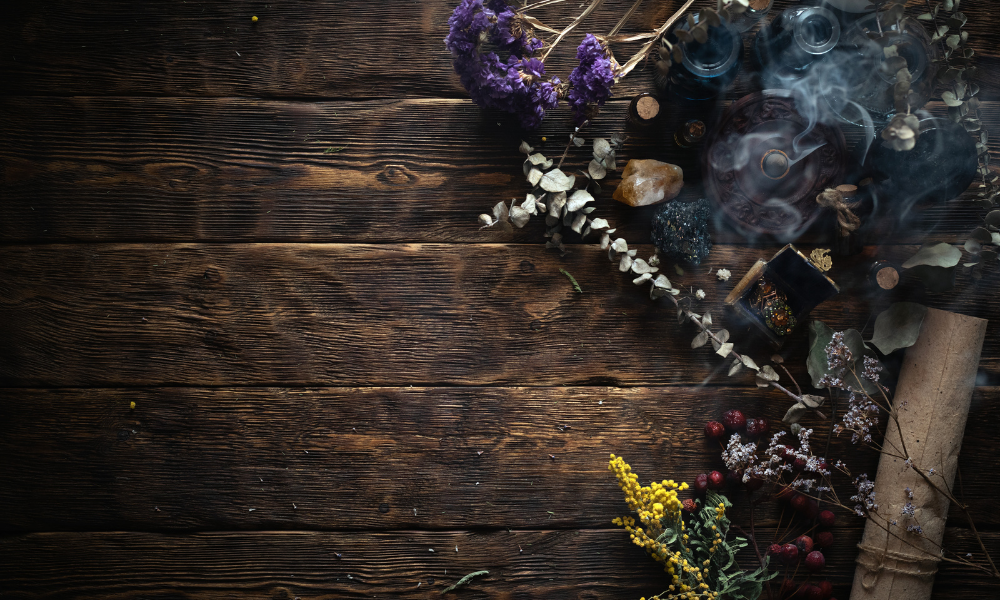
Practitioners of the Wicca religion recommend celebrating the Sabbat Mabon for two main reasons. The first is reconnection with nature. Celebrating Mabon is a time to align with natural cycles, thus taking the opportunity to achieve greater balance.
Remember that on this date, day and night have the same duration, the ideal moment to bring this energy into your life. As a second reason, is the opportunity to thank the gods for the harvest, recognizing their graces and sharing them with those who need food and security.
Mabon is also an ideal time for reflection. Under its waning light, you can still complete plans made when the sun was in its splendour, reminding yourself of your dreams.
So you can prepare for the darker, colder days ahead by recognizing the fruits of your labor that will keep hope for better days alive.

